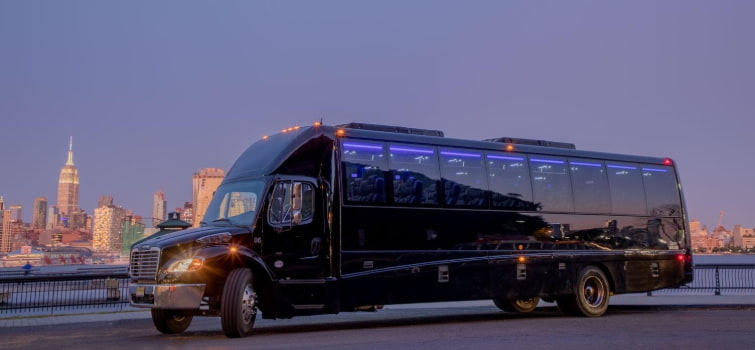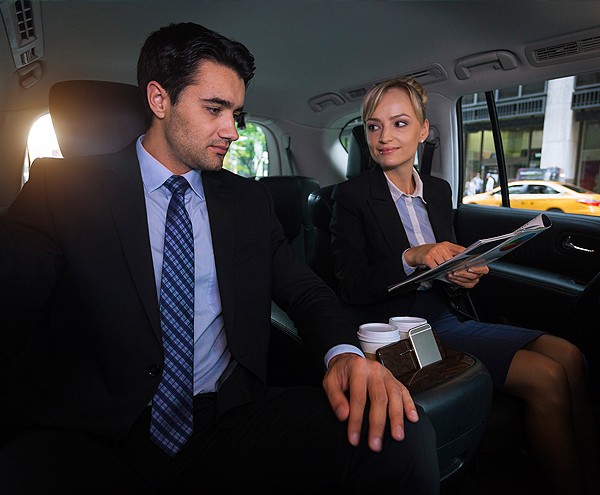20 Free Reasons For Deciding On Event Shuttle Sites
20 Free Reasons For Deciding On Event Shuttle Sites
Blog Article
Top 10 Tips On Route Planning And Coverage Shuttle Transportation For Employees
Here are 10 tips to plan routes and cover of employee shuttles:
1. Understanding Employee Needs
Use focus groups or surveys to determine where employees reside and when they would prefer shuttles, and other particular requirements (like accessibility needs). This information is crucial to design routes that will maximize satisfaction and participation.
2. Examine traffic patterns
Research the patterns of traffic flow and peak hour times within the vicinity of your company. Google Maps' traffic data will help you find congestion-prone roads to avoid at times of shuttle. It will ensure that the ride is smooth and reduces the chance of delays.
3. Utilize Technology
Install software for route planning that optimizes routes based upon real-time data on traffic and employee schedules. Shuttle apps can be utilized to adjust routes dynamically and make sure that your service is always most efficient.
4. Establish Strategic Pickup Points
Pick centrally located locations to collect employees who can be easily reached by the majority of staff. Look for locations that are close to public transportation hubs or residential areas. This will ensure maximum coverage and minimize the route.
5. Create a flexible schedule
Create a scheduling system that allows for a variety of working hours. The availability of shuttles during peak hours and off-peak hours could benefit shifts with different hours.
6. The implementation of a feedback loop
Encourage employees to provide feedback about shuttle service. Use the information you receive to adjust routes, pickup locations schedules, routes, etc. Continuously reviewing satisfaction levels with employees will ensure that services are maintained that meet their needs.
7. Monitor and analyze data usage
Keep track of shuttle usage patterns to identify which routes are most popular and which may need adjustment. The data you collect can be used to make educated decisions on the best ways to improve services and how to allocate resources.
8. Encourage ridesharing, carpooling and other forms of transportation
Encourage employees to utilize a carpooling system together with shuttle service. This will reduce the requirement for shuttles and provide you with more flexibility. Apps that promote ridesharing can enhance this effort and decrease the overall cost of transportation.
9. Consider Environmental Impact
Design routes that limit carbon emissions by using energy-efficient shuttles. Encourage your shuttle service to use hybrid or electric vehicles. This is not only a good way to support sustainable practices, but it also benefits employees who are environmentally conscious.
10. Safety and Compliance
Ensure that all shuttles adhere to safety rules and legal regulations. This includes conducting regular maintenance on vehicles, making sure drivers are properly trained and certified, and offering insurance. When planning transportation security should be the highest priority.
By incorporating these strategies to your workplace, you can develop an efficient employee shuttle transportation system to meet the demands of your staff, while ensuring security and efficient use of resources. See the recommended employee transportation for website tips including lax airport transportation services, airport service, luxury transportation, airporter bus, dallas airport shuttle to hotels, service shuttle, shuttle to airport atlanta, airport shuttle service, airport shuttle pickup at home, transportation for airport and more.
Top 10 Tips To Ensure Security And Reliability Of An Event Transportation Service For Corporate Events
Here are 10 top suggestions to ensure security and dependability when hiring a corporate party transportation service.
1. Conduct thorough vehicle inspections
Before the event, be sure to inspect thoroughly all vehicles that will serve as vehicles for transport. Verify the condition of key components including brakes. lights, tires and seatbelts. Regular maintenance, along with pre-trip inspections, can minimize the possibility of mechanical breakdowns.
2. Hire experienced, qualified and skilled drivers
Verify that the drivers are clean on their driving records, have been licensed and are qualified. Conduct background checks on the drivers to ensure they are proficient in transporting individuals, especially corporate events. It is crucial to have drivers who have experience and are trained to ensure safety and reliability.
3. Safety Training Programs
Give comprehensive training to all employees and drivers of the transportation service. The training should include defensive driving, emergency procedures and customer care techniques. Regular training sessions help keep the safety of drivers in mind. They also help drivers to prepare for different situations.
4. Establish Clear Emergency Protocols
Create and communicate clear procedures for emergencies to drivers and passengers. This includes protocols for medical emergencies, accidents and other unforeseeable situations. To increase overall safety make sure that you conduct exercises to ensure that everyone is aware of the best method to respond in an emergency.
5. GPS Tracking Software and Fleet Management Software
Use GPS tracking on every vehicle to monitor the location of every vehicle in real-time. This technology allows transportation coordinators to track shuttles, optimize routes and respond quickly to any problems that may occur. It also allows them to check the performance of vehicles and maintenance.
6. Be sure to have the proper insurance coverage
All transportation activities should be insured comprehensively. This should cover both the liability insurance as well as any coverage that is needed for accidents or injuries that could happen in the course of transportation. The insurance of the event and its attendees is crucial to ensure their safety.
7. Be clear with attendees.
Everyone should be aware about transportation details including pickup locations, schedules and contact details. In advance, providing this information can help to manage expectations and ensures that participants feel confident about their transportation arrangements.
8. Monitor Traffic Conditions and Weather
Check weather conditions and traffic continuously on the day of your event. Be prepared to adjust the routes or schedules to ensure punctual arrivals. Having a plan in place for dealing with adverse weather or heavy traffic could improve the efficiency of transport services.
9. After the event, gather feedback and conduct reviews post-event.
Gather feedback from the guests regarding their experiences when traveling after the event. Get feedback from the attendees on security, punctuality, as well as overall satisfaction. This feedback can help identify areas to improve and make sure that future transportation services are safe and reliable.
10. Create a contingency Plan
Develop a strategy to handle unexpected events such as vehicle breakdowns or the absence of drivers. This plan will outline alternate alternatives to transportation, as well as the procedures to be followed in an emergency. Contingency plans improve the reliability of your plan and ensure that attendees don't get stuck without transportation.
These tips will help improve the safety of corporate events transportation. Safety isn't just beneficial to attendees but also the entire business. A reliable transportation service is a major factor in the overall event's success, ensuring that attendees have a seamless experience from start to finish. Follow the top rated click this for more examples including managed logistics, companies that transport, best transport, transportation and logistics services, global logistics, group transport, global logistics company, service transportation company, trucking services near me, services and logistics and more.